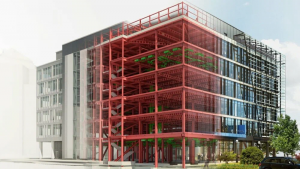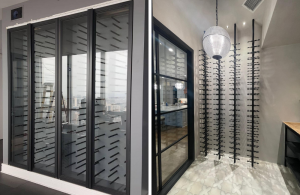How Real Estate Developers Benefit from BIM

Real estate projects often face delays, unexpected costs, and design mistakes that slow everything down. To tackle these challenges, many developers turn to Building Information Modeling services as part of their project planning. BIM creates detailed 3D models and keeps all project data in one place, making it easier to catch errors early and make faster decisions. With clear visuals and accurate information, projects run more smoothly, risks are reduced, and better buildings are delivered.
What is BIM and Why It Matters for Developers
BIM, short for Building Information Modeling, mixes 3D models with project data. It explains how each part of a building connects. Unlike CAD drawings, BIM goes beyond simple lines on a screen. It holds materials, schedules, and costs in one system. Developers get a complete view of the project long before construction begins. Mistakes come out early, so they avoid costly changes later. Updates are shared in real time, helping all team members stay in sync. It’s not only for architects or engineers. Developers gain insights to cut costs, manage risk, and make better calls. BIM helps projects run more efficiently and reach completion sooner.
Enhanced Project Visualization
BIM makes detailed 3D models before construction starts. Developers get a clear view of how spaces could appear and function in real life. It helps them decide layouts and make clear design choices. With these models, flaws are easier to spot and fix early. That saves both time and money. With BIM, teams can explore lighting, structural elements, and material options before construction starts. Developers then use these visuals to impress investors and buyers. This builds trust and can secure funds or pre-sales. Models reduce confusion for teams too. Developers get a realistic view and take confident steps forward.
Cost and Time Savings
BIM cuts mistakes that usually become expensive during construction. It highlights issues before workers even step on-site. Developers plan material use carefully, reduce waste, and save money. Project schedules are more accurate, so tasks finish on time. Contractors and suppliers get the same data, so coordination improves. Teams respond quickly to changes, which helps the project stay on schedule. In real projects, BIM often means fewer delays and smaller budget overruns. Developers save money, deliver faster, and give clients better outcomes. By removing guesswork, BIM makes timelines manageable. Projects finish with less stress, on budget, and on schedule.
Improved Collaboration Across Teams
BIM provides one shared platform for architects, engineers, contractors, and developers. Everyone works with the same details in real time. Benefits include:
- Fewer miscommunications
- Faster decision-making
- Clearer materials and schedules for suppliers
- Developers tracking progress even from a distance
This keeps the whole team aligned and projects moving smoothly.
Risk Management and Compliance
BIM helps spot risks early, whether it’s structural issues or legal requirements. Developers see problems before they become expensive delays. They can check designs against building codes and safety rules right away. BIM also supports green goals by improving energy efficiency and meeting sustainability standards. Catching issues early helps avoid financial losses and lawsuits. Accurate data helps teams make decisions with clarity and confidence. Projects remain safe, compliant, and eco-friendly. Developers feel more secure knowing risks are reduced and rules are met.
Marketing and Investor Confidence
Developers use BIM visuals to showcase projects to investors and buyers. The 3D previews are detailed and accurate, showing the real look of the property. Investors trust layouts and designs they can clearly see, making decisions simpler. Buyers feel more confident when they get a close preview of their future space. These visuals also speed up funding and help secure pre-sales. Marketing feels easier with BIM because projects attract attention faster. Clear presentations win trust, support, and investment for successful builds.
Conclusion
BIM saves developers both time and money while improving teamwork across all sides. It reduces risk and keeps projects compliant. The 3D models also give strong marketing value and boost investor trust. Developers can avoid mistakes, plan better, and deliver faster. BIM has moved beyond being just a tool; today, it’s essential for modern real estate development. Embracing it keeps developers competitive and efficient. Smart use of BIM makes projects smoother and buildings more successful.






